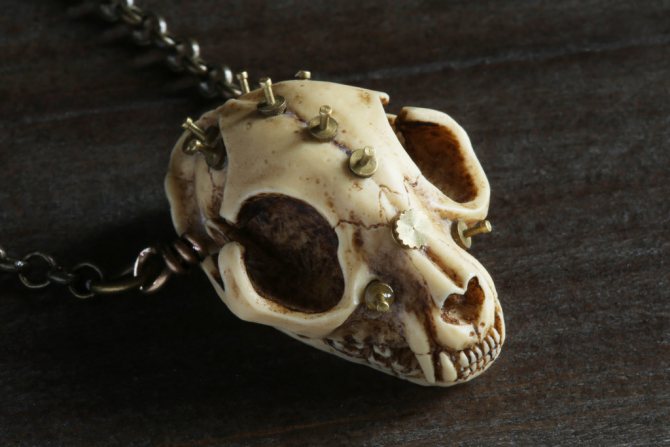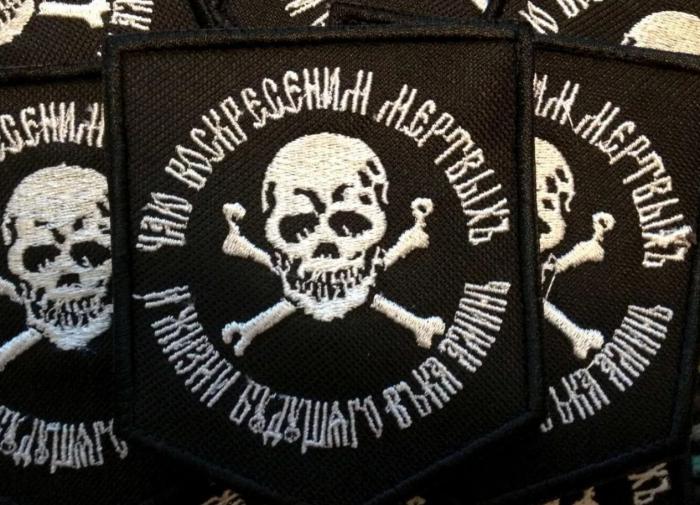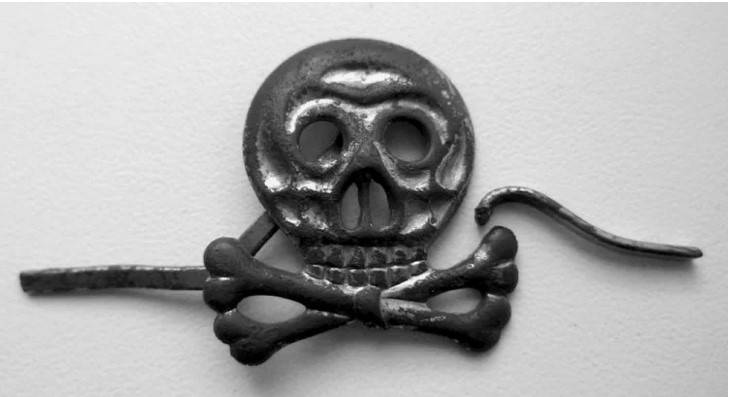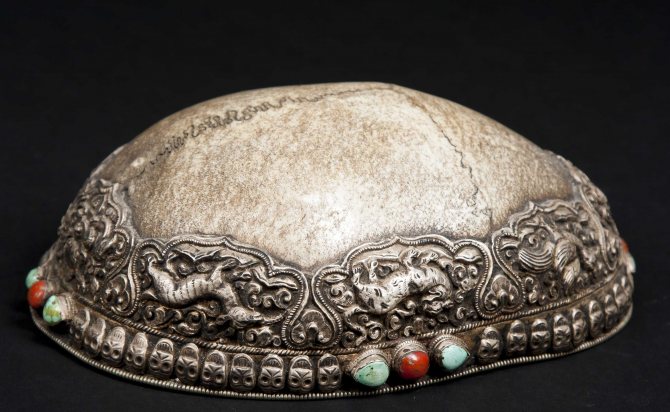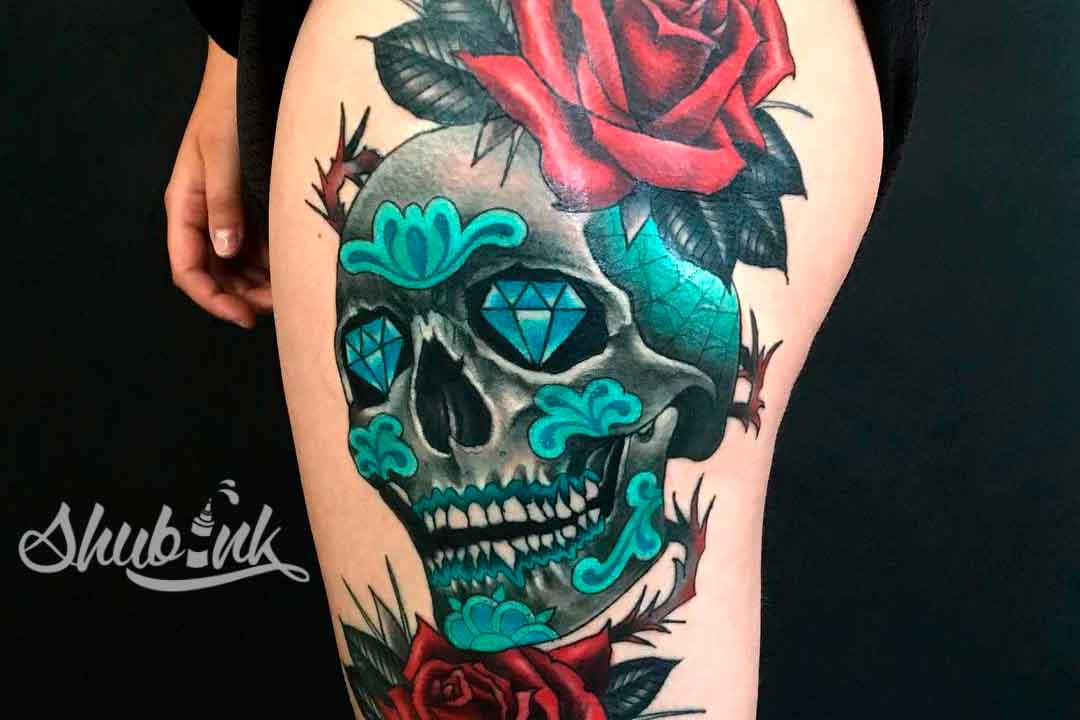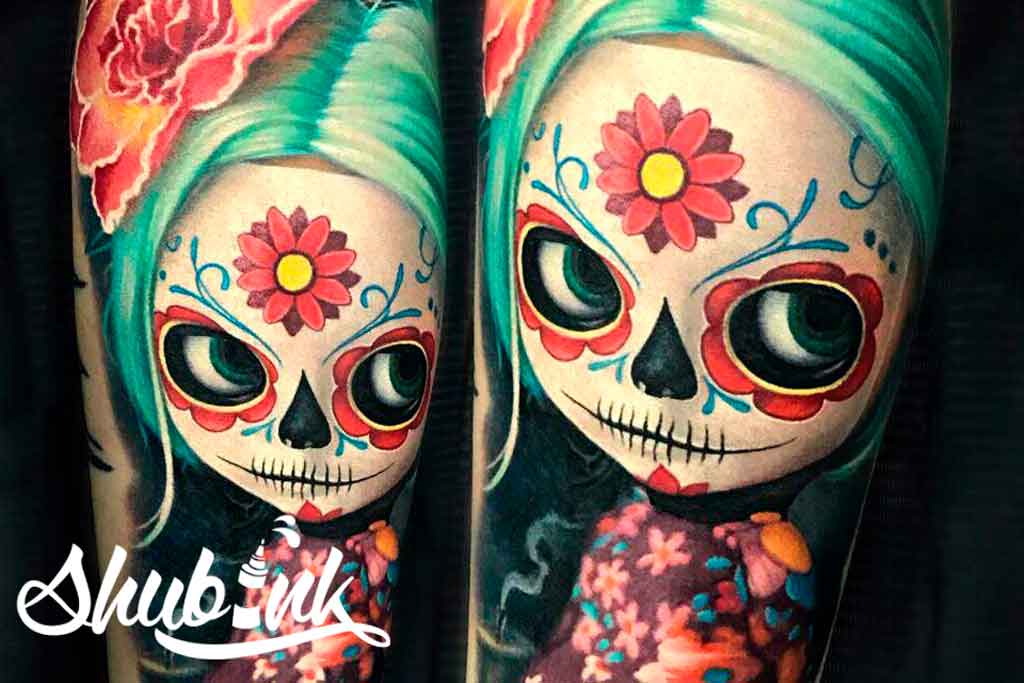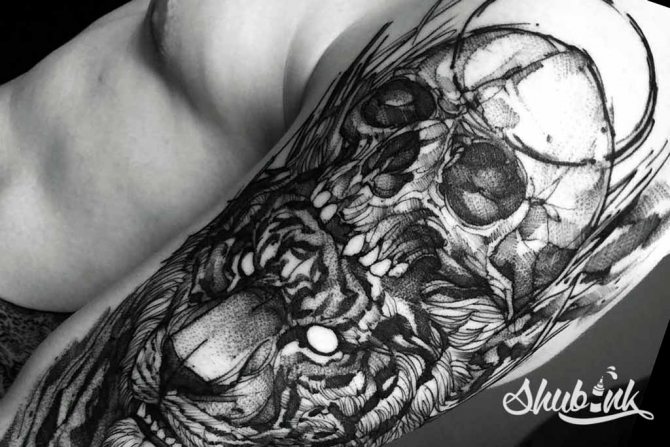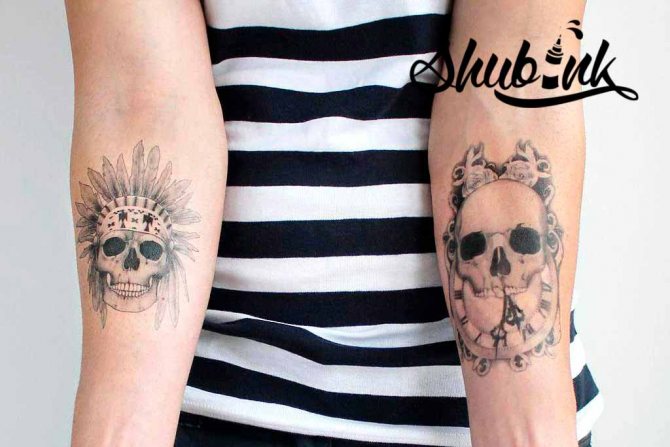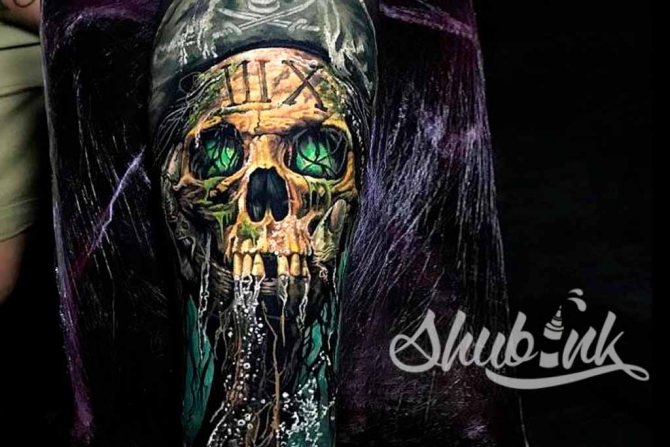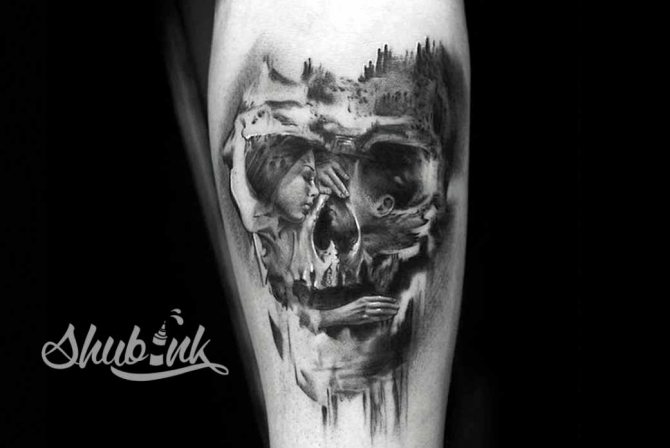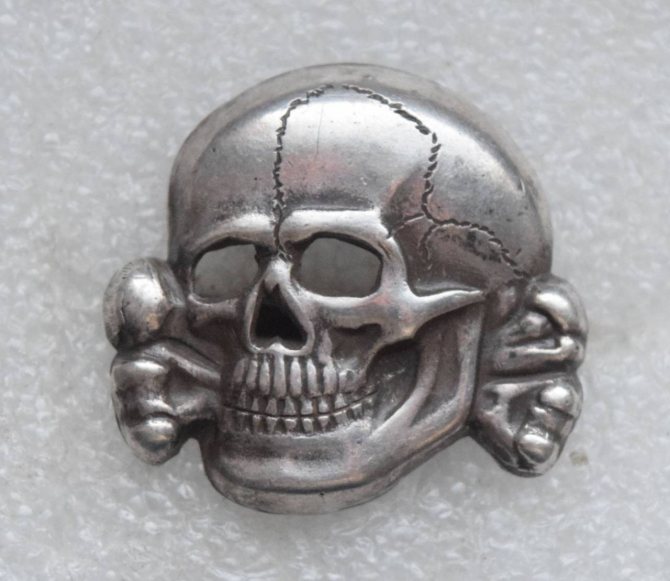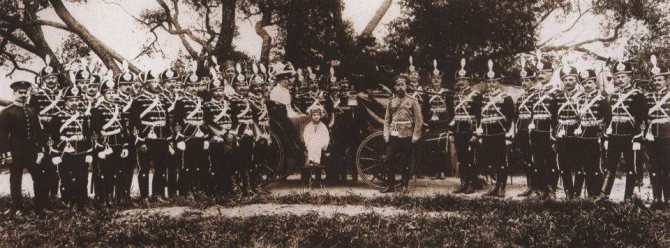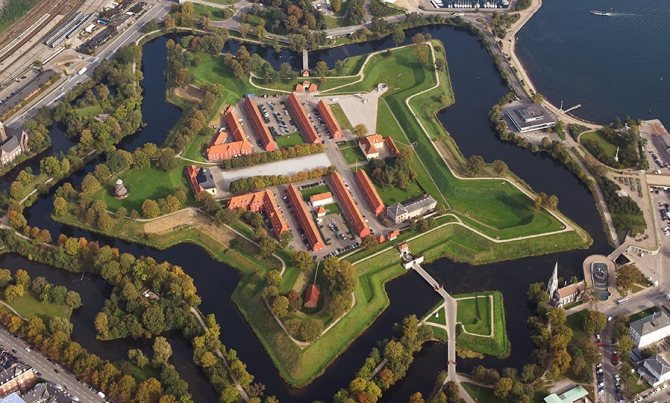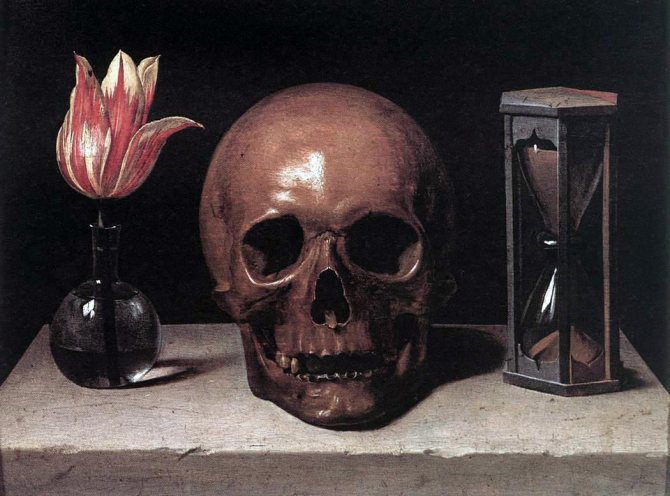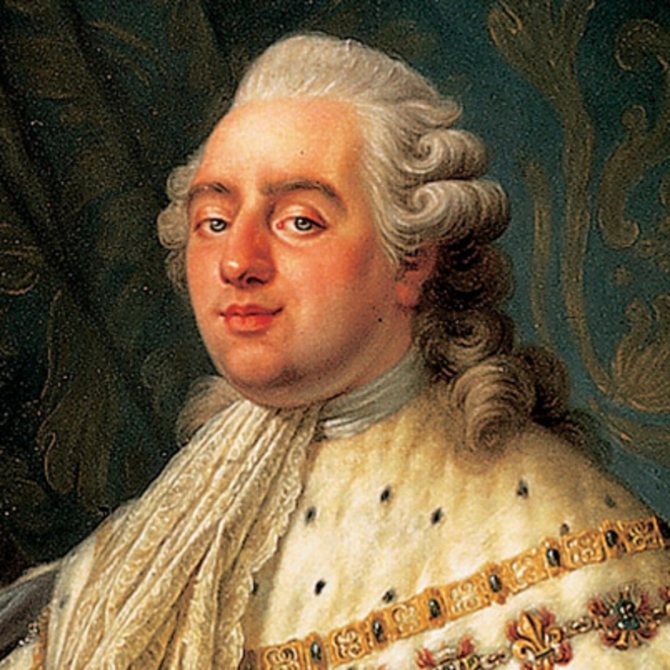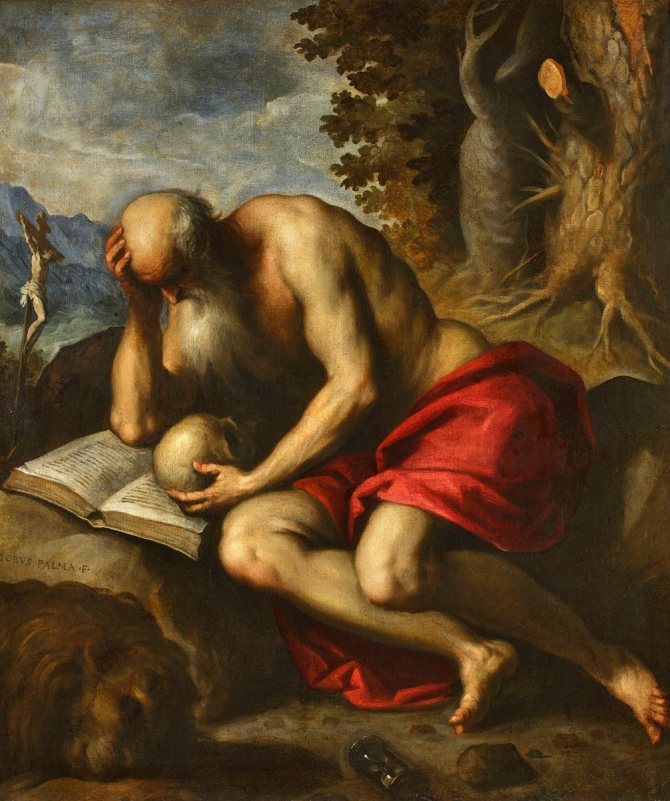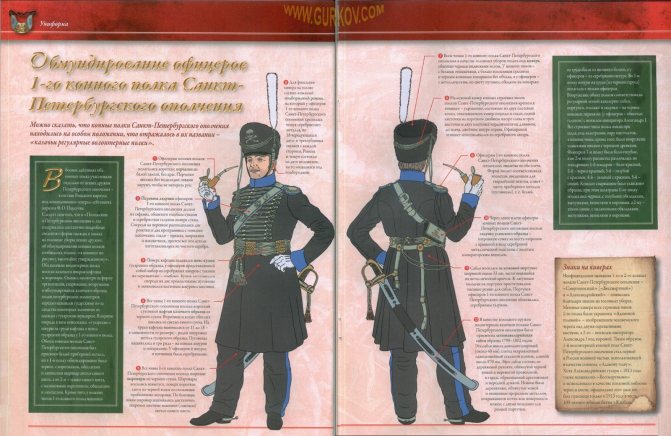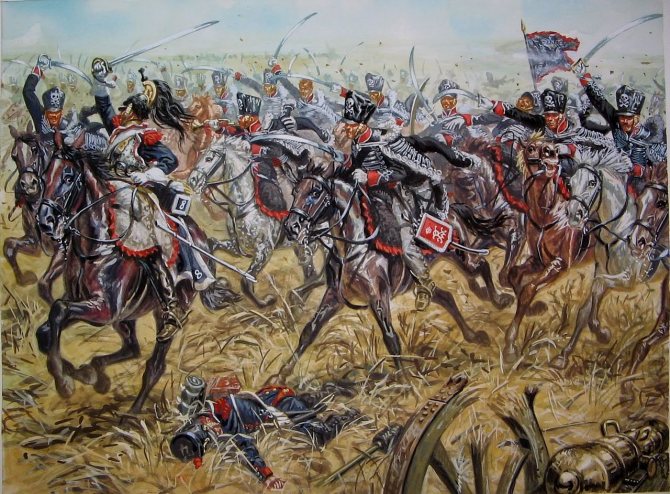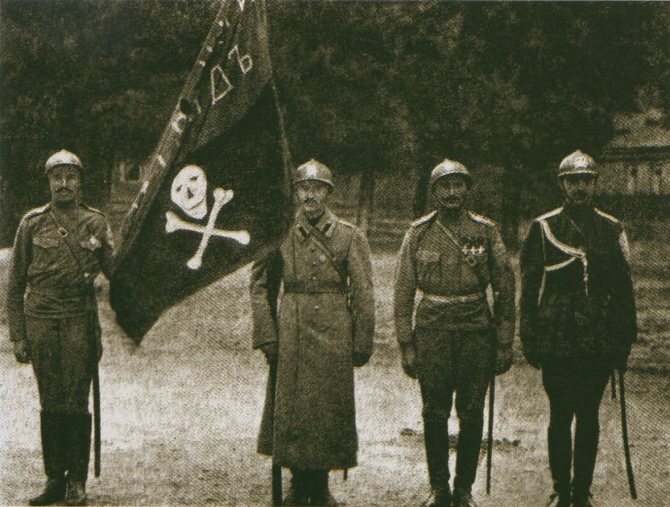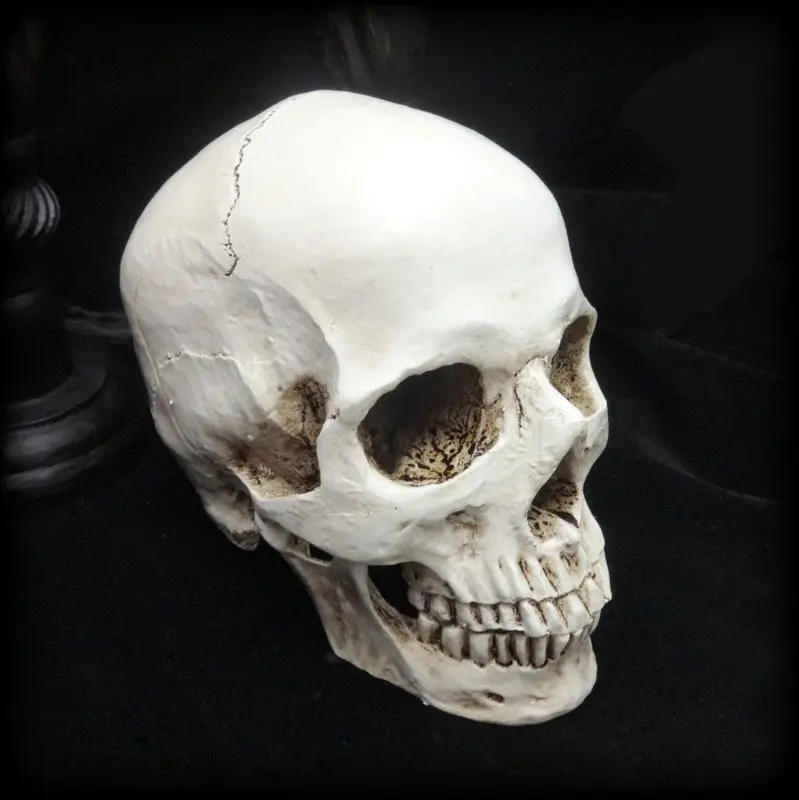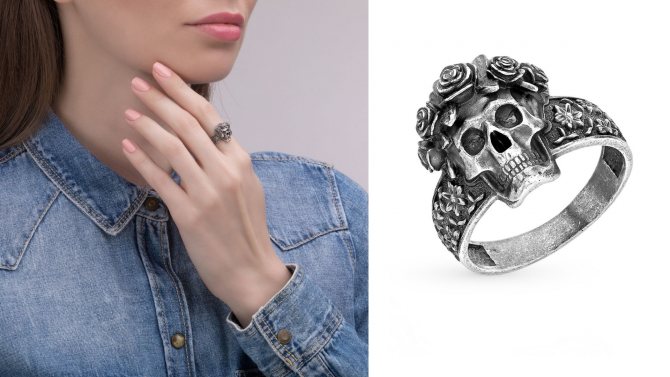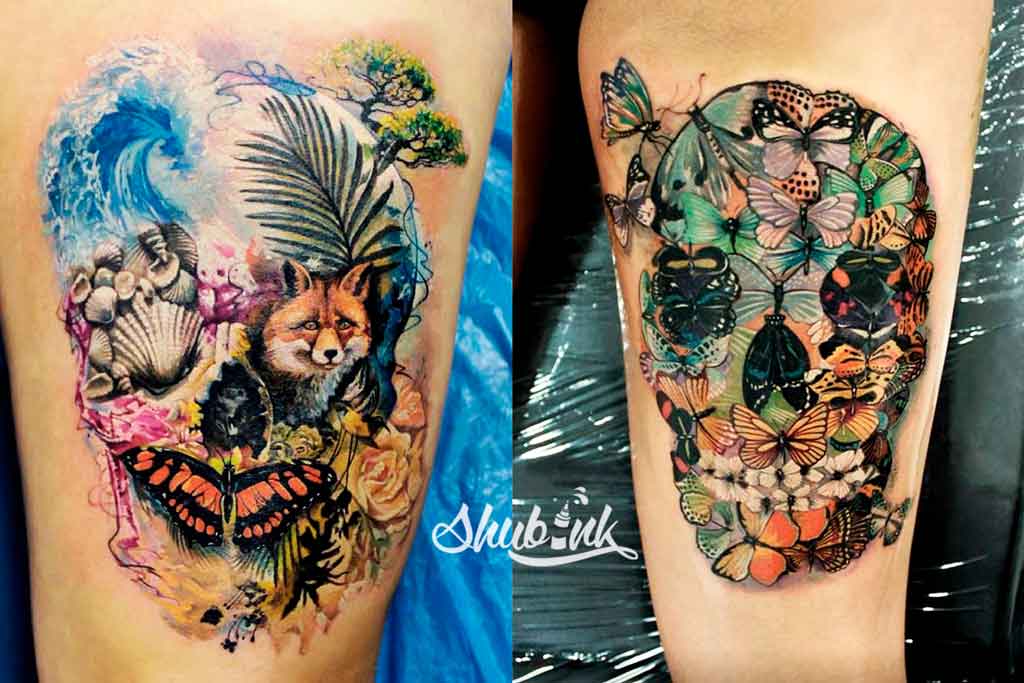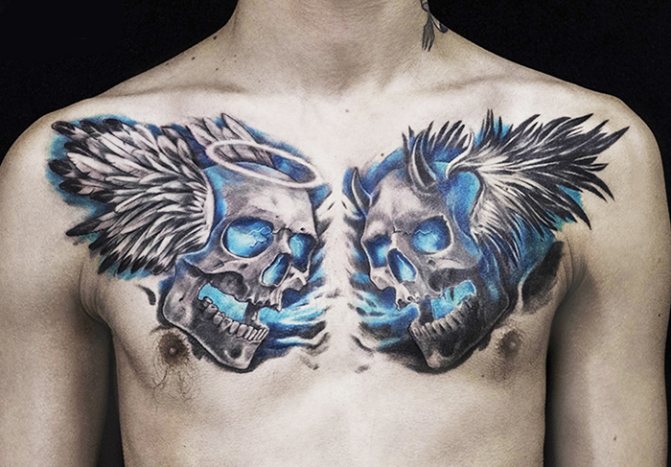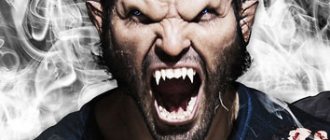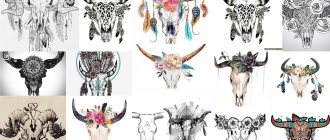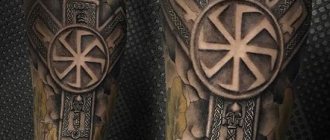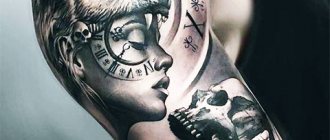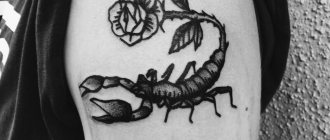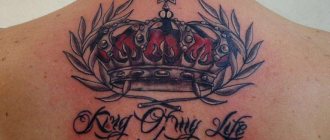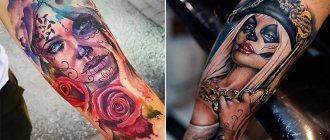Seeing the symbol of the skull with crossed bones, many of us immediately imagined a pirate ship from movies about pirates. However few of us know what this unpleasant symbol means in reality, which the most impressionable people see as nothing else but death. Yes, on the one hand the skull and means the frailty of earthly existence, but this is not the full symbolism of the sign. It occurs in many cultures, where it has different meanings, not only relating to the mortality of the human being, but also to the immortality of the eternal soul, which has the property reincarnate from body to body. Learn more about the symbol of the skull in our article.
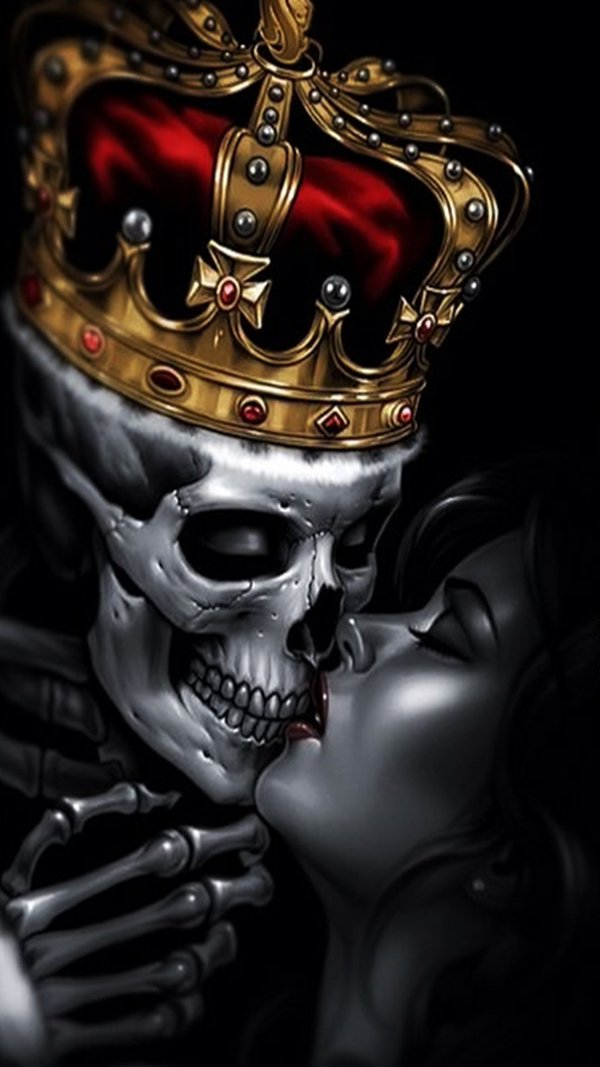
Symbolism of the sign of the skull
Death has always attracted people's attention as the unknown, as the mystery that lies beneath the veil. What is there behind that veil? Is there another existence beyond earthly life? These questions are of interest to everyone living on earth, for each of us will cross the threshold of earthly life into another existence. The symbol of the skull has a dual meaning. On the one hand, it means the incredible vitality, because after the decay of the mortal human body remains imperishable just bones, in particular the skull. According to many ancient philosophical sources, it is the skull is a vessel, a temporary shelter for the immortal human soul, which comes to earth for the sake of performing certain tasks.
This symbol is popular among certain groups of people, more often associated with extreme or military activities, and is used by them as a ritual symbolism. Also this sign is suggestive of philosophical reflections on death and life, and often means isolation from society, hermitage.
The main meanings of the skull are:
- The memory of the frailty of our earthly existence;
- the experience of death - a reminder of the transformation of life, the change of values. What is valued by many, for example, various material possessions, cannot be carried with them into other worlds, where only spiritual qualities are valued, those that the soul has accumulated during its next incarnation;
- the vanity of all worldly things, the transient nature of earthly life, death, the transition from one state to another;
- the transience of time, the exodus, the signs of death, the gods of the dead.
Skull with crossed bones is a warning of mortal danger, or symbolizes the life force contained in the head and tibia bones.
Magical Animal Skulls
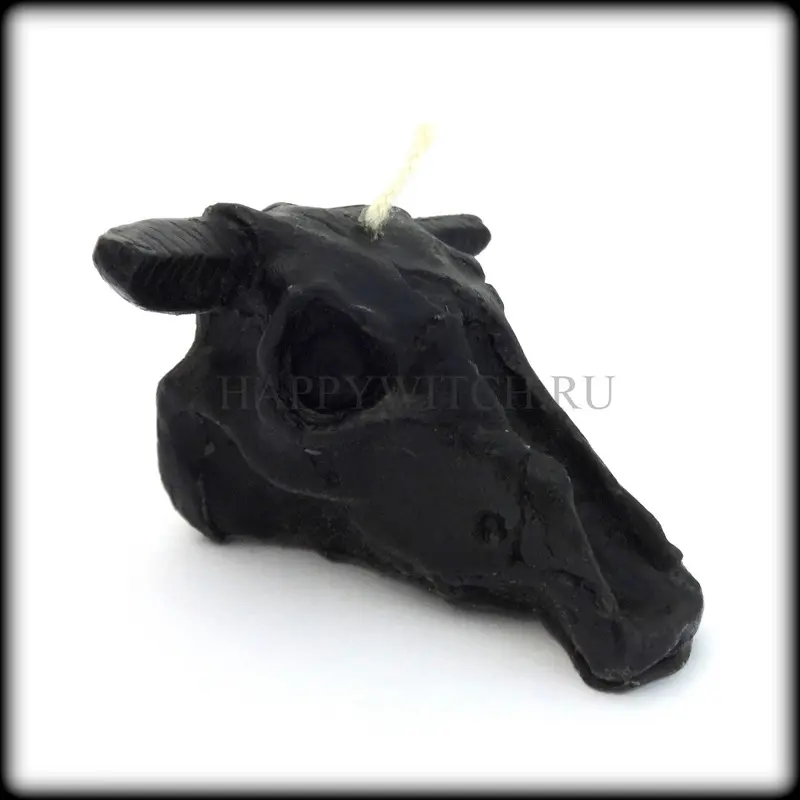

In ancient times, pagans used parts of animal bodies in their rituals - this is one of the manifestations of the totemic cult. The magical skulls of animals, giving strength and protecting the family or the tribe, were considered the abode of the spirit of the animal ancestor. Through them one had a connection with this magical ancestor - it was believed that an animal of the same species would serve as a kind of channel through which one could ask for advice or receive a mystical guide.
One of the most famous totem animals was the white horse, which symbolized the solar disk, magical forces of goodness, and a divine gift. The nomads sent the horse along with the deceased to the burial, and the horse's head on a symbolic fence stood guard over the tomb. The Scythian tribes worshipped horse skulls as a mystical receptacle of the animal's deep magical powers; the sacrificed horse was a guide for the human soul to the netherworld. This custom was typical of the tribes that inhabited the plain part of Europe in the Bronze and Iron Ages.
When laying a house in the place where there would be a red corner, our ancestors placed a skull of a horse, aspiring to create in that place a "channel" for communication with the gods. The house was given a magical spirit-guardian. The tradition lasted until the 19th century. A horse or bull was sacrificed at the foundation of large buildings, such as fortresses, and a rooster was good enough for a peasant's house. The magical skulls of pets hung on fences were amulets against any misfortune.
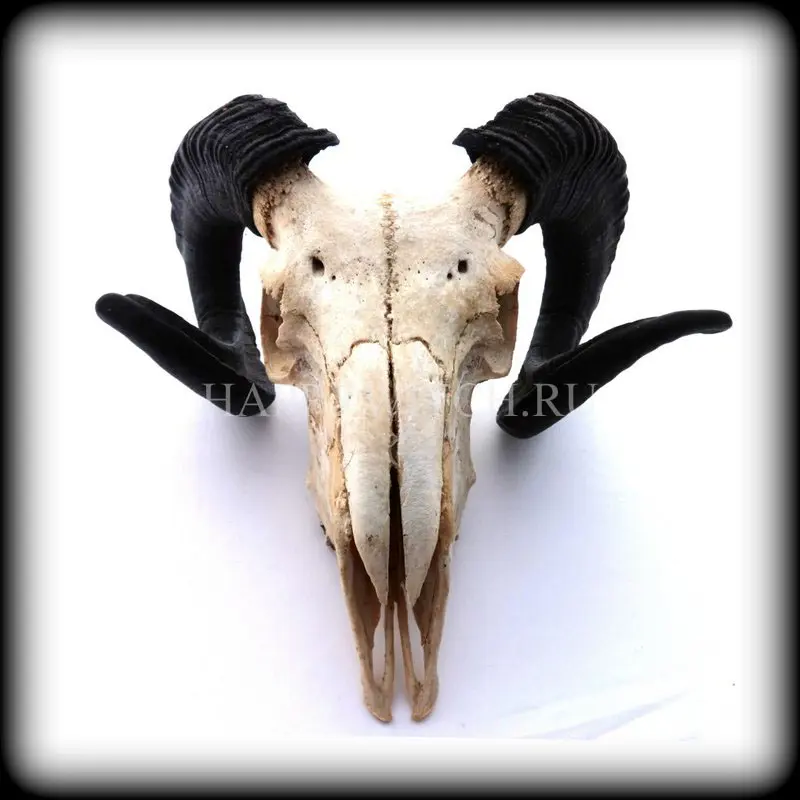

Another patron animal was the cow. Many peoples in Eurasia, since the III millennium B.C., and in some places up to now, had a cult of the Divine Mother, symbolized by the cow. In ancient Scandinavia for some rituals on the magical cow skulls were applied runic staves to protect the hearth and harvest, fertility, increasing female magical power. And sometimes for evil deeds - to put a spell on the family.
A goat's skull with the insignia on it, as a symbol of Lucifer, was used by medieval magicians in black magic rituals. The skull of this animal has thus acquired a lasting reputation as an instrument of the devil.
The skull is also used by northern shamans as a demonstration of their reverence for the evil one. In the skull inhabit spirits patrons and helpers, often using the skull of his totem (crow, wolf, fox, lynx, marten, and others). And at the entrance to the house is usually buried skull of the beast of prey - protector of the family.
In necromancy, the skull is one of the most important tools: it became an "anchor" for summoned spirits, it was used to communicate with the dead, and was also used for exorcism.
The animal skeletons are considered by voodoo sorcerers to be magical anchors for their spirit-helpers. In our days, the skulls of animals are also used as a vessel to protect the owner.
Today, magical skulls of animals also make a vessel for guardian spirits of the owner, embedded in the foundations of buildings or make part of the altar display. They are enhanced by the inscription of magical signs, such as runoscripts. As amulets for the home use skulls of cattle and horses (preferably light colors), and the totem - depending on the "inner beast" (skulls of wolves, martens, bears). The main thing is to receive forgiveness of the deceased animal, to give a ransom to the sacrificial beast. If the previous owner will quietly leave, you can use the skull for magical purposes.
The history of the symbol of the skull in different cultures
In many ancient cultures, this sign represented the power of the spirit, life energy and the ability of souls to reincarnate. There are many legends in which the skull and crossed bones appear. Some sources indicate that this symbol is related to the Freemasons. There is a curious legend about it:
"In ancient Phoenicia there was a large city of Sidon, whose ruler was in love with an Armenian woman of noble origin. The woman also reciprocated the love of this powerful man. Their love was so sublime that they never had any intimate contact during their lifetime. But misfortune happened - the woman died. When she was buried in the crypt, the grief-stricken lover sneaked in after dark and could not restrain himself - he had intercourse with the dead woman. After he was about to leave, he heard a voice proclaiming to him, "Come back here in nine months and you will find your child." When the ruler returned to the crypt after the announced time, he found a human skull between his beloved's legs and heard the same voice again, commanding him to take the skull with him, for the skull would help him conquer all his enemies."
In ancient times, many nations considered the skull as the repository of the soul, so if a family member died, he was buried without the head, and the skull was placed in a prominent place of honor in the home, and before it was painted in different colors.
The Celts believed that the skull is hidden sacred power that protected people from all sorts of misfortune and disease, and the Maya generally existed a cult of the skull. The head of the deceased was cut off, the skull was cleaned, a hole was drilled in it and worn as a talisman around the neck.
The Celts also believed that the defeated man's head retained his power even after death, so the defeated enemy's head was left for the benefit of the victor. It was framed in silver or gold and used as a drinking vessel. It was believed that whoever drank from such a vessel absorbed all the power of the owner of the skull. Often heads were attached to spears and then went into battle. If a Celtic leader was successful in killing an enemy leader, his skull was donated to the temple. The Celtic knights had no choice but to keep the skull of their leader in their possession.
Muslims have a saying whose meaning is that a person's future is marked on his forehead in the seams of the skull bones among the curves resembling letters.
The magical skulls and their riddles
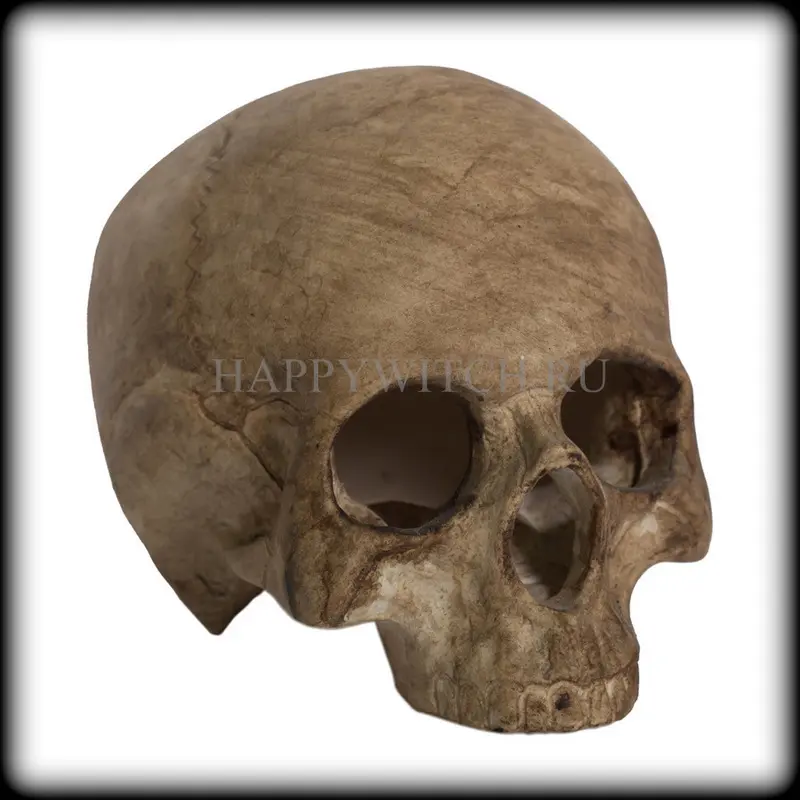

According to the Tale of Bygone Years, Prophetic Oleg died from the poison of a snake hiding in the skull of his fallen horse. Could it be that a magical equestrian spirit had summoned its irreverent master?
Wild peoples created entire collections from the bones of slain opponents and strong animals, so that the owner of this collection would draw strength from it. Widows in Papua New Guinea made a magical protective amulet out of their spouse's skull and sometimes kept food in them as if they were dishes. The ancient Germans turned the heads of their slain enemies into chalices to drink their powers with wine. And with the Celts, magical skulls were sacred.
The Middle Ages, a time of religious fanatics, alchemists and witches, revived belief in magical skulls. In 1612, Anne Chateaux, a British woman, was accused of stealing dead heads from a church cemetery in order to transform them into her own magical inventory.
Many legends are devoted to skulls. In the British county of Lancashire, the residence of the Catholic bishops of Wardley Hall holds one of the "squealing skulls" (belonging to St. Ambrose Berlow, executed in 1641). It is believed that the skull will scream heartbreakingly if you try to move it, and it always returns to its native walls.
A case from the seventeenth century also comes to mind. Legend has it that Anne, the daughter of Sir Henry Griffiths, owner of Barton Agnes Hall, who was dying of beatings by burglars, asked that her head be walled up in the house after her death. But her will was not carried out. The household began to be disturbed by noises and otherworldly voices. They disappeared only after the girl's head was moved from the cemetery tomb to the mansion and walled up in the Great Hall.
England is famous for stories of "squealing" magical skulls. Another happened a century later in Dorset. Mr. Pinney's black servant, whom the owner of the manor brought back from his wanderings, fell ill and died shortly thereafter, asking that his ashes be sent to his home island of Nevis in the Caribbean before his death. But the poor man was buried in a church graveyard, where the deceased began to show restlessness, although he was moved to a new place several times. As a result, the servant's skull ended up in the master's house and, according to legend, it was impossible to take it out - a terrible scream would rise and the thief himself would die in a few months.
Skull in Christianity
In Russian culture, the skull with crossed bones is of Christian origin and is called Adam's head. It is known from historical data, that the place for crucifixion of Jesus Christ was that place where remains of the Progenitor of all mankind Adam were buried. That is why Golgotha is called the Frontal Place, that is literally translated from the Greek as the "skull" place. According to the legend, the blood that spilled on Adam's bones from the wound inflicted on Christ by the spear of the Roman centurion washed the Righteous One of all men from his sins, after which the Savior descended for three days (Friday, Saturday and Sunday) into hell in order to transfer from there to heaven all the righteous people of the Old Testament, including Adam.
The skull is an essential attribute of Christian and Hindu hermits who chose to renounce the corruptible world of earth and take the path to salvation.
Skull and bones there are many icons that depict the crucifixion of Jesus Christ. It symbolizes not only the Savior's death on the cross, but also His resurrection to eternal life.
From counterculture to (necro)glamour
In the second half of the twentieth century, the skull shocked the public as an emblem of aggressive subcultures: bikers, skinheads, punks, but in the new millennium it has lost its infernality and elitism. In 2010, the Hell's Angels motorcycle club sued the fashion house Alexander McQueen for copying its identity, a skull with wings, in the design of things. The bikers' lawyer argued that the problem was not just money: membership in the club implies the right to wear symbols, which "imposters" do not have. The fashion house settled the case by recalling products from stores, but strategically the subcultures lost out to fashion.
By grinding down the youth movements of the last century, commerce grinded down the skulls as well. Selling the rebels their own protest did not end it - the gothic became glamorous, and the skull turned into a rhinestone embroidered picture. Some clothing brands even turned it into their logo.
Just as the religious and military meanings of Adam's head became a thing of the past, the subcultural meanings became irrelevant at the end of the noughties. The era of "explanation for the skull" has faded into oblivion.
Opening a popular website that sells designer clothes, you can find dozens of products with "dead heads": scarves, bags, jewelry, socks. As a decorative element, they appear on everything from bedding to toilet paper.
Exploiting the theme of death, philosopher Jacques Lynn Foltin has dubbed the glossy images of models of the 21st century "corpse chic" ("necroglamour" - according to the translator Galina Besedina). In contemporary fashion, there are no longer the boundaries that formerly divided the use of signs into "normative" and "non-normative. There are almost no things that should not be worn under any circumstances (from time to time designers are accused of cultural appropriation, but sacred themes on the catwalks seem to have already stopped causing indignation). Therefore, "necroglamorous" fashion is possible.
"Secularization and the development of consumer society have removed not only the barriers that used to promote a 'closed' fashion system, limiting people's consumer options, but also taboos about how death can be depicted in ordinary life. Becoming part of the mainstream fashion aesthetic, skulls have been taken out of context, turned into banality, lost their ability to shock, and can now be bought at any price.
Jacques Lynn Foltin
This use in fashion of the skull, previously considered to be the center of the spirit, a sign of humility or a symbol of fearlessness, reflects a process of disembodiment of values. Freedom of expression turns into a crisis when the signifier ceases to mean anything, turning into empty simulacra. Can we ignore the vulgarized signifier of death and accept that mass culture absorbs everything? (Or does it kill everything and therefore, like no one else, has the right to funerary emblems?)
Although skulls have become an ornament, they continue to disturb artists who turn to this symbol again and again in different forms. And it is all the more difficult to remain indifferent to the original meanings when it comes to the actual skull.
This was proved by the story of the composer and pianist Andrzej Tchaikovsky, who passed away in 1982 after bequeathing his skull to the Royal Shakespeare Theatre as the "performer" of the role of Yorick. His will was heeded, but work on the scaffolding stalled. The actors referred to the discomfort in rehearsals, the fact that they are not able to read the monologue of Hamlet, looking into the empty eye sockets of the dead. Everyone discussed only Tchaikovsky's skull. Then an impression was made of it, and the musician's remains were put away in storage. In the noughties, however, they were retrieved by actor David Tennant, who admitted only after twenty-two performances that he had played with the original. The excitement caused by this situation confirms: the skull continues to be the subject of the eternal question that Hamlet asks.
The symbol of the skull among the Tibetans
In addition, the symbol represented the stages of development of the Tibetan deities. The meditation on human remains (skull and bones) was popular among Tibetans. Thanks to this meditation it was possible to overcome the fear of death for those walking on the path of self-knowledge and spiritual development, at the same time not forgetting about earthly existence in perishable body. In Tibet earlier there was a ritual vessel - bowl gapala (kapala), made from the top of the human skull. It was used for ritual purposes in Hindu or Buddhist tantra. It was not always filled with simple wine. Often the mouthpiece was shown filled with blood mixed with some of the organs of evil beings, such as the ears, heart or tongues of demons.
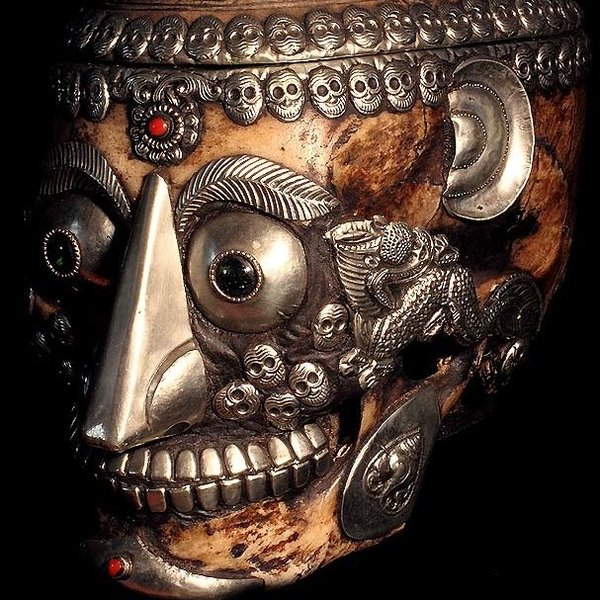

A common prediction
The skull, as a symbol, has a twofold, quite opposite meaning. On the one hand, it is a direct embodiment of death, negative energy, otherworldly forces of darkness. But on the other hand, it reflects the opposition and the desire for eternal life.
In ancient Rome, warriors put this mark on their clothes and armor, believing that it would save their lives and help defeat the enemy. Thus, the reminder of death added to their caution, attentiveness, agility, endurance, and skill.
Find out what's ahead for you - Horoscope for the zodiac signs today
By popular demand of subscribers we have prepared an accurate horoscope-application for cell phones. Forecasts will come for your zodiac sign every morning - impossible to miss! Download for free: Horoscope for Every Day 2020 (available on Android)
In Russian symbolism, the bones of the skull were called "Adam's head" - it represented liberation from death, rebirth and salvation of the soul. Adam's head was applied to monastic vestments, used in crucifixes and crosses. In modern subcultures, the skull signifies fearlessness. For bikers, the image is like a challenge to death.
Skull in a dream can reflect the contradictory nature of the dreamer, who constantly lapses from extreme to extreme, not always feeling the fine line between good and evil. Such people are usually very stubborn, proud, vain and obsessed. If you dreamed of a skull, it means that you are standing at a crossroads and you find it difficult to make a decision.
Smirking face in the dreams is a warning sign against obvious errors. Fate as it would test your strength, sending you a serious life situations with which you can not cope independently. Trying your willpower, you are ready to give up stability and a familiar place. Hardening character and advancing to success, you are able to turn from the seemingly profitable and promising way and time to change strategy.
To hold in hands this attribute of death - to suffer a fiasco in affairs. Do not succumb to the will of chance, keep the situation under control, so that the circumstances do not turn out to be super extraordinary.
Dreamed of his own skull, which is considered a teenager - a sign that you want to look up to you, watching you and repeating your actions and deeds. For the dreamer, this is a great responsibility. You need to be more active in showing the wisdom, decency, kindness and creativity given to you.
Trying to find this symbol in the ground - to the search for answers to controversial questions. To bury - to eliminate what tormented your soul for many years.
What else do you dream of when you see a skull
- in a gold frame - to meet a talented and omniscient person, the guru of his craft;
- In dreams in the form of a cup from which you drink - to comprehend the essence of being, to strive for enlightenment, self-education, spiritual development, the moral ideal;
- To break it with a hammer - to degradation, fall of moral and spiritual principles, ruin;
- to pray on it - to create an idol for yourself, mistakenly believing in its unique possibilities and abilities;
- to throw in the sea - in reality to try to start a new life, abandoning good thoughts and ideas;
- to be delighted with a giant skull - to have a false judgment of an authoritative and influential person, to easily believe rumors, gossip and unconfirmed information.
Pirate Skull Symbolism.
A skull with crossed bones was depicted on a pirate flag, although, on pirate ships dating from the mid-17th century, there was not one flag, but several, and each had its own special meaning. But it was the black flag with the skull and bones that was the most noteworthy. It had such a cheerful name - Jolly Roger and was used by pirates in XVII-XVIII centuries.
This banner sent a call to the oncoming ship to stop immediately and surrender. If the ship did not respond to the warning, then a red flag was hoisted after the black one to signify the intention to immediately begin boarding. In this case, no mercy was out of the question.
Often the flag with the skull was used during epidemics of deadly diseases, plague or cholera. Pirates also often used this flag to frighten a more powerful enemy and avoid a clash from more powerful ships.
Practical guidelines for interpretation
Next, let's give a few recommendations for interpreting a dream about a skull. Astrologers recommend taking into account not only the details of the dream itself, but also the position of the moon.
Evaluation of the feasibility of the dream On November 8, 2021.
, according to the site Gadalkin House. Today is Monday, Waxing 1st Quarter from Nov. 5 0:15, the Night Sun has entered the 1st house. If you had a dream on a different day, you can look up the recommendations
in this table
. Now let's look at the main indicators of today that influence the interpretation, according to astrologers.
| The probability that the dream will come true: No more than 70% | |
| Indicator | Recommendations for interpretation |
| Day of the week: Monday | Dreams from Sunday to Monday quite often come to life, so it is desirable to remember them and analyze them well. Therefore, it is desirable to remember the content of the dream and read its interpretation in the dream book. If the dream was calm, it means that all the obstacles that will meet on your way will be successfully overcome. |
| Lunar day: 4-й | 4th Lunar Day. You may have to change your current plans or abandon them altogether. If you saw relatives or parents in your dream, it means that you may have "inherited" their problems. |
| Moon in the sign of: Capricorn (25°15'24"); | Capricorn - When interpreting dreams, it symbolizes a reassessment of values, serious life changes, mental anguish, and introspection. If you have encountered a similar interpretation in the dream book - pay attention to it. |
| Phase: Waxing 1st Quarter | Waxing Moon. Whatever the interpretation of the dream, keep in mind that this period is characterized by a calm positive energy. But it is still too early to spend it! Now it is best to plan any household or work affairs, saving energy, not wasting it. |
Using a symbol in the military
Skull and bones was in demand by the military in the 18th century. It was stitched on military uniforms. This symbol was popular in some types of troops in many countries - Britain, France, Austria, Poland, Italy, Hungary, Finland. In the ancient German states, such as Prussia and Brunswick, there were mounted and infantry units, on the uniforms of soldiers which had the image of the skull and bones. A frightening element of the military dress of Prussian equestrians was a hat with a silver emblem of skull and bones.
In the Russian Empire, there was the 5th Alexandria Hussar regiment called "hussars of death". It consisted of French émigré Royalists, who fought against the revolutionary regime in Russia. The emblem of the regiment was a cross, in the center of which was a skull with crossed bones. This symbol was also used by some units of the Red Army, as well as members of the anarchist detachments of Nestor Makhno.
In World War II the symbol was used in the uniforms of all SS divisions. It was also put on daggers, necklaces, flags, rings, banners and musical instruments (trumpets and drums). SS Chief Sturmbannfuhrer Heinrich Himmler was very proud of the emblem of his unit and at every opportunity told everyone about its history.
Nowadays the symbolism has practically lost its popularity. Except that the skull itself, together with some additional elements, such as wings, lightning, etc., is still used in the United States by commando units and some other paramilitary units of the special services.
Styles and colors
A tattoo artist can perform a full body skull design in a variety of styles. The most popular include realism, old skool, minimalism, tribal, chicano, thrash polka, neo-tradition, watercolor, dotwork and blackwork.
| Styles | Features |
| Realism . | This style is characterized by the complexity of execution. All the small details of the image are carefully worked out. Only experienced artists are able to create high-quality realistic tattoos. Images are obtained volumetric thanks to the shadows and halftones. The main feature of the color palette in realism is a smooth transition from one shade to another. The tattoos are large in size. |
| Old skool. | The characteristic features of the style are thick black outlines, simple saturated colors, concise images without detail. The color scheme consists of black, red, blue, green and yellow. Old-school style drawings are made flat, not volumetric. Instead of gradients and penumbra use an absence of color or a transparent background. |
| Watercolor | Tattoos made in watercolor are characterized by abstraction, brightness, contrast and soft contours. The image turns out unique due to the imitation of strokes. To create drawings a variety of color palette consisting of dark and light shades is used. In the style of watercolor also combine incongruent colors. Watercolor tattoos can be either small or large. |
| Tribal | This style of tattoo is considered the oldest. It is characterized by flat and clear contours with pointed ends. The drawing in the style of trayble turns out to be patterned and monochromatic. To impose a tribal tattoo choose black and gray shades. Such tattoos are tattooed taking into account human anatomy and physiology. Trible tattoo can accentuate the dignity of the body or hide its flaws. |
| Minimalism | This style creates small inconspicuous and colorless tattoos with minimal gradients. They are very easy to hide from prying eyes. The minimalist image is often chosen as the first tattoo. |
| Thresh Polka . | This style is characterized by gloomy motifs. It is dominated by black, which is most often combined with red. The other colors are used quite rarely. For the thrash polka is characterized by layering, sharp contrast, the scale of the image, the addition of various fonts, inscriptions and combination with other styles. |
| Chicano | This style of tattoos was originally preferred by Latin American gangs. For Chicano style tattoo sketches use black color and gray gradients. No bright hues are added to the design. Characteristic themes of the style include faith, wealth, the underworld, and girls. |
| Neo-Traditional | This style is a modern interpretation of traditional tattooing. It combines crisp edges, neatly made outlines, bright volumetric images and many small details. The technique allows you to make the picture funny and funny. It can be combined with realism. |
| Dotwork . | Dotwork-style drawing is stuffed with dots. Their location depends on the density, contrast and richness of the lines. The dots are applied close to each other. When applying respects symmetry, proportions and a certain order. The size of the dots can be different. Dotwork tattoos are made large. In case of a small size, they lose their attractiveness. |
| Blackwork | In this style, black is the only dominant tone. The technique involves the complete painting of certain parts of the body in black. The painted areas are also diluted with large three-dimensional images. Such a tattoo helps hide scars and other skin defects. Choosing a blackwork tattoo, you need to remember that it can not be overlapped. |
The color of the tattoo depends on the style chosen.
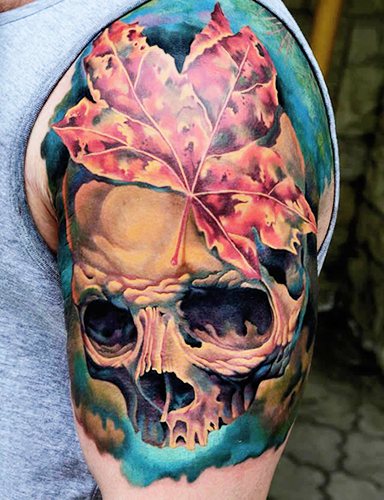

Members of the male sex most often give preference to black and white tattoos. Women are attracted to more colorful tattoo designs.
Tattoo skull meaning
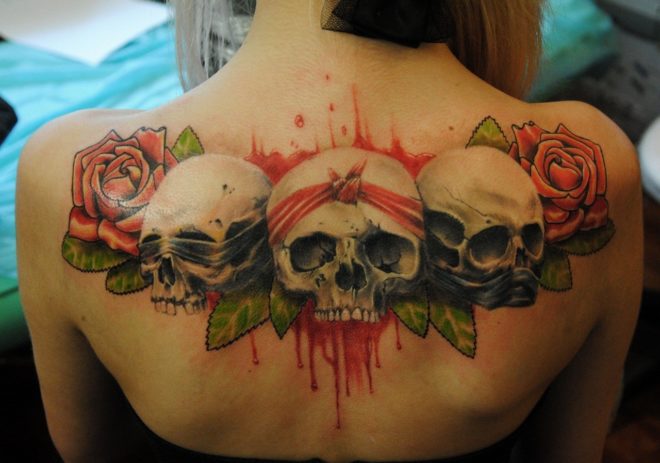

Any tattoo is not just a decoration, and carries a certain meaning. The skull tattoo means:
- death, the transition of the soul after death into another state, another world;
- rebirth, the beginning of something new, unknown.
Worn by such tattoos are mostly young, adventurous, reckless, liberated and gambling. There are several options for tattoos depicting the skull:
- Skull with wings. This picture symbolizes freedom, carefree, liberation from the mundane routine and problems;
- A skull with a snake crawling out of its eye socket or wrapped around it represents wisdom. The image says that its owner after his death will leave to posterity his knowledge and experience gained during his earthly life;
- The skull, and the crown worn on it, is a personification of power and might;
- the raven perched on the skull is destruction;
- a skull with a rose between its teeth. The owner of such tattoos can be said to be carefree, living only for today, unconcerned about what will happen to him in the future and no death is frightening to him. The image can also symbolize love and death or the immortality of true feelings;
- The image of the skull of a goat or other animal with horns represents abundance and vitality.
Other meanings of the skull tattoo:
- The skull tattoo is ubiquitous on the bodies of people associated with the criminal world. It is applied by thieves. If in addition to the skull on the image there is a dagger, it means that the person resisted law enforcement during arrest;
- Bikers decorate themselves and their outfits with skulls. It is believed that such images protect them from death;
- Often the skull tattoo means liberation from something, gaining freedom;
- In Mexico it is customary to apply this tattoo to good luck, of which no one else is asked to attract, but death itself;
- people whose lives are associated with gambling, constant risk, as well as those who spend their lives gambling, often draw a picture of the skull and bones. This shows that their life is worthless and can be broken at any time;
- In some cases, the skull symbolizes the bitter truth and forgiveness.
The symbol of the skull is not pleasant to everyone. Many people react to it with fear, and there are those who specially decorate themselves with such images to show their fearlessness to the most unknown that is in our life - death, which at the same time is an integral part of it, the apogee, the transition to another stage of evolution, the beginning of something new and better.
Where to buy magic skulls
At a certain point, adherents of the magical world think about purchasing a skull. To the layman such thoughts will seem strange, and witches at times need with its help to create an indelible impression on clients or uninvited visitors, to use in magical ceremonies or meditative reflections. It is possible to make the order on a page of internet-shop "Witches' happiness", true, we do not promise, that in a warehouse we really will find a part of a human skeleton. But our assortment and prices will come to your taste!

